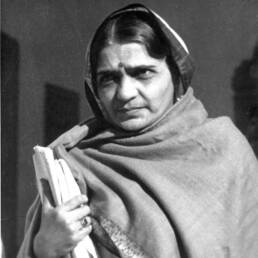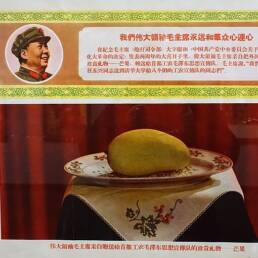She dreamt of being a swimming champion. But instead she went on to become the face of an iconic peasants’ protest movement. Read on for the incredible and inspiring story of Ila Mitra.
In the late 1930s, a name often appeared in the sports sections of leading Calcutta dailies. It was that of Ila Sen – a promising swimmer. Ila was born in 1925 to Nagendranath Sen – the deputy accountant general of the Bengal administration.
In both 1937 and ‘38, Ila Sen became the junior state champion of Bengal province. Her father was Ila’s biggest fan and motivator and he would have been delighted to receive news from official networks that 15-year old Ila was a certainty for India’s contingent to the Helsinki Olympic Games of 1940.
Sadly, thousands of miles away, a German leader’s actions triggered such a chain of events that the 1940 Games had to be canceled. There is no record of how this news was received by the young girl.
She probably took it in her stride and moved on. In 1942, after clearing her Intermediate exam, Ila joined Bethune College. It was at Bethune that Ila was first influenced by the principles of Marxism and joined the Communist Party.
She joined the Mahila Atma Raksha Samiti (MARS) wing of the CPI and traveled across Bengal for relief work during the famine of 1943 – setting up community kitchens and joining night vigils during those calamitous times.
In 1944, Ila was married to Ramendranath Mitra – scion of a zamindar family but a member of the CPI and opposed to the feudal landholding practices. At the time, tenant peasants had to handover half of the seasons’ produce to the land owner.
In 1946, the Communist Party spearheaded a movement to reduce the land owners’ share to 1/3rd instead of half – it came to be known as the Tebhaga movement. The Mitras became one of the primary faces of the movement.
Ila and Ramendranath inspired their own peasant tenants as well as others in the vicinity to mobilize against other landlords and refuse to pay half share.
In 1947, when the partition of India happened, Nawabganj, where Ramendranath’s family had land holding, was allotted to East Pakistan. The Mitras decided to stay there. Ila and her husband continued their work in their ‘new’ country.
However, the administration came down hard on farmer protests and the couple frequently stayed ‘underground’ to evade arrest. In 1950, Ila led a farmer uprising in the Nachole sub-district of Rajshahi.
Police forces were sent to quell the movement but matters soon turned violent. Four policemen were beaten to death. Ila Mitra was named as wanted in the murder case. To avoid arrest, Mitra changed into tribal attire.
But at the railway station, she was identified by her wristwatch and arrested. At Nachole station, she was stripped nude and confined to a solitary cell without food and water. She was repeatedly beaten brutally with lathis and rifles.
She had a nail hammered into her ankle, had a boiled egg inserted into her private parts and was gang-raped multiple times over the next four days. Ila Mitra was transferred to Nawabganj Jail where fortunately for Ila, the warden was her university batchmate.
Noticing that Mitra was running a temperature of 105F, the warden immediately arranged for her treatment. She survived and remained imprisoned till 1954. Although she recovered her ability to walk by 1956 she was left with a limp for the rest of her life.
In 1954, Ila Mitra was granted parole on health grounds and moved to Calcutta for treatment and settled there. She completed her masters, started teaching at Sivanath Sastri College and was elected to the state assembly in 1962 from Manicktala.
She retained the seat till 1977. During the 1960s, Ila Mitra was one of the most prominent faces of the food movement in West Bengal. She also played an active part during the 1971 war, setting up relief homes in Calcutta for refugees from Bangladesh.
In 1965, communal riots broke out in some parts of Calcutta. An enraged Hindu mob was charging towards a predominantly Muslim locality of south Calcutta. At the entrance of the area, they were confronted by the sight of Ila Mitra, brandishing a lathi.
She appealed to them to come to their senses and not commit a dastardly act. Her actions helped cool down tempers and a major massacre was averted.
Although Ila Mitra’s Olympic dreams were dashed, she never forgot her first love. Even in her late years, she accompanied her grandson to Dhakuria Lake for a round or two of swimming. She breathed her last in 2002.




